Micro lecture 22 - vibrio spp., Campylobacter jejuni, Helicobacter pylori
1/36
There's no tags or description
Looks like no tags are added yet.
Name | Mastery | Learn | Test | Matching | Spaced |
|---|
No study sessions yet.
37 Terms
Vibrio spp.
-Major human pathogens: V. cholerae, V. parahemolyticus, V. vulnificus
-Gram-negative curved rods, facultative anaerobes, oxidase positive, motile with polar flagella
Vibrio cholerae
-Transmission: fecal-oral through contaminated water, fish, and shellfish; Requires large inoculum due to sensitivity to stomach acid
-At-risk populations: young children in non-endemic areas or patients with low stomach acid
V. cholerae treatment and prevention
-Treatment: rapid supportive fluid replacement as needed; antibiotics may shorten duration of symptoms
-Prevention: vaccine, but variable efficacy and may wane in 6-12 months
Cholera
-epidemiology: endemic in marine environments; replicate in water. Does not require salt but can tolerate it; Shellfish poisoning
-Symptoms: Rice water diarrhea; Loss of fluid (15-20 liters/day); Hypovolemic shock; Metabolic acidosis

Vibrio cholerae Virulence Factors
-cholera toxin; a classic A/B toxin
-CTA subunit (CTA) binds and ADP-ribosylates a stimulatory G protein (Gs) in ER - permanently turning it on
Vibrio cholerae Virulence Factors result in:
-Increased cAMP production that…
-Triggers secretion of Na+, K+, and Cl- ions that…
-Triggers secretion of H2O
-Net results: watery diarrhea and electrolyte loss
Cholera Disease presentation
-vomiting and profuse watery diarrhea with bits of mucus (rice water diarrhea) possibly with abdominal cramps, vomiting, and low-grade fever
-Loss of as much as 1 liter of fluid per hour in severe infection!
Vibrio parahemolyticus
-Susceptible to stomach acid
-Transmission: contaminated seafood and from skin infection of seafood handler. Causes 95% of seafood-related infections!
-onset: 4 hrs-4 days, duration 2-5 days
-presents: watery diarrhea w/ general upset GI symptoms
Vibrio parahemolyticus virulence factors
Kanagawa hemolysin (induces Cl- secretion), flagella (motile!), pili (attachment), disrupts lysosome
Vibrio vulnificus
-Leading cause of death related to seafood consumption in the US (Case-fatality rate of 30 to 40%)
-transmission: seafood handlers
-epidemiology: presence in salt water strongly correlates with water temp.
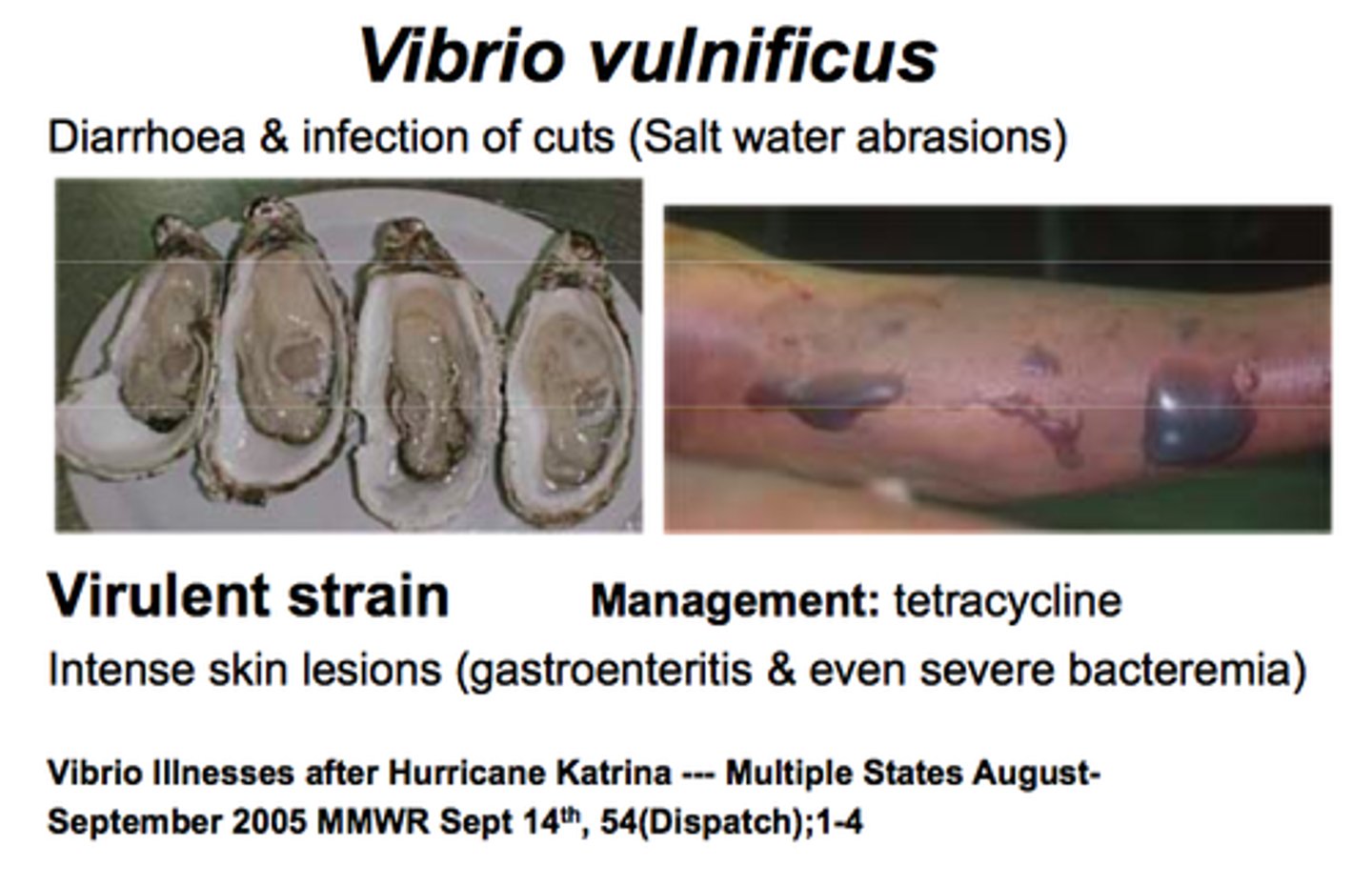
Vibrio vulnificus Pathogenesis
-Vibriolysin: causes tissue destruction and leads to hemorrhage and necrosis
-Acidic polysaccharide capsule: antiphagocytic
-Hydrolytic enzymes: degrade gastric acids,
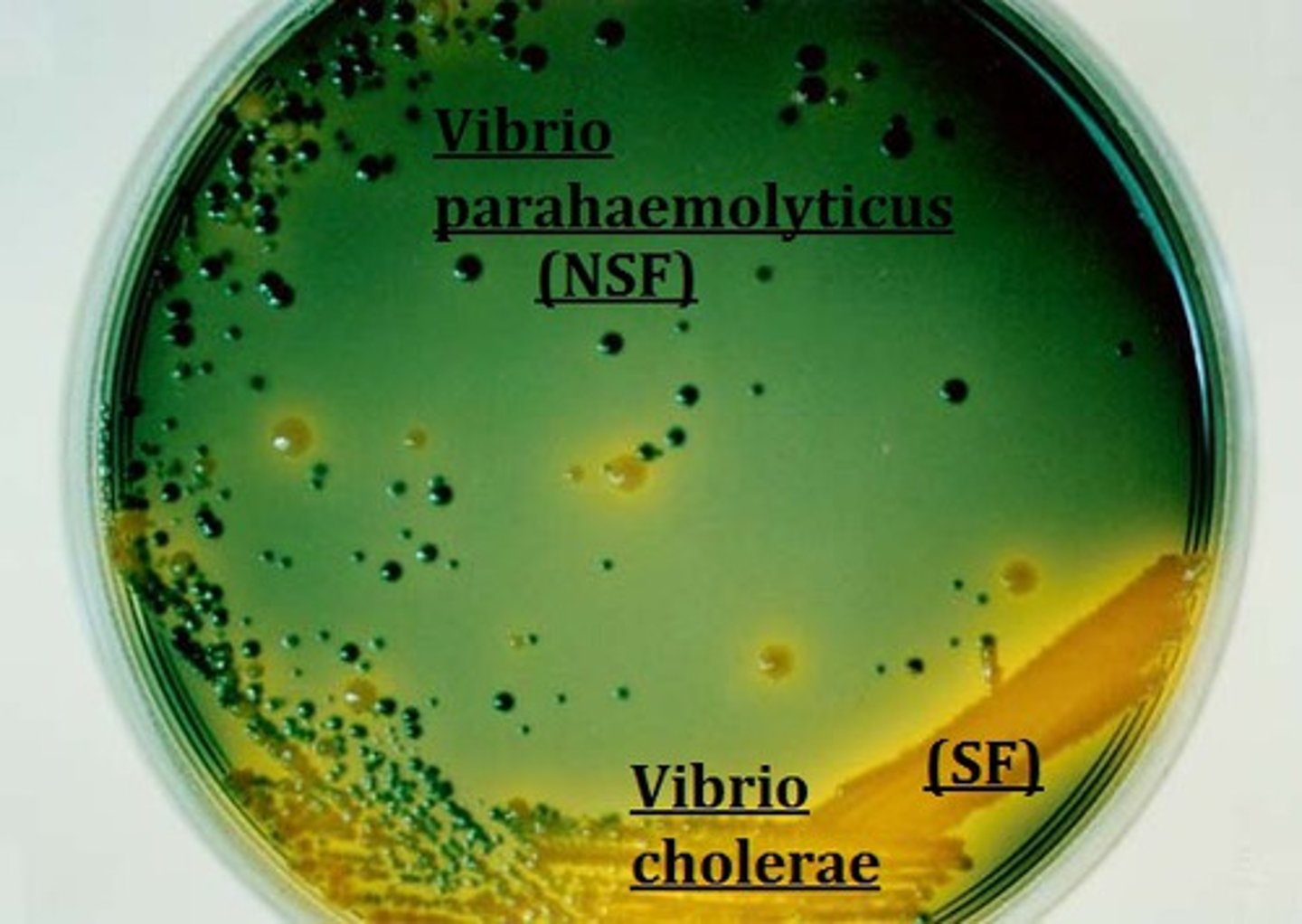
TCBS media
-V. cholerae: ferments sucrose, ↓ in pH turns agar yellow
-V. parahemolyticus and V. vulnificus don’t ferment sucrose, agar stays green
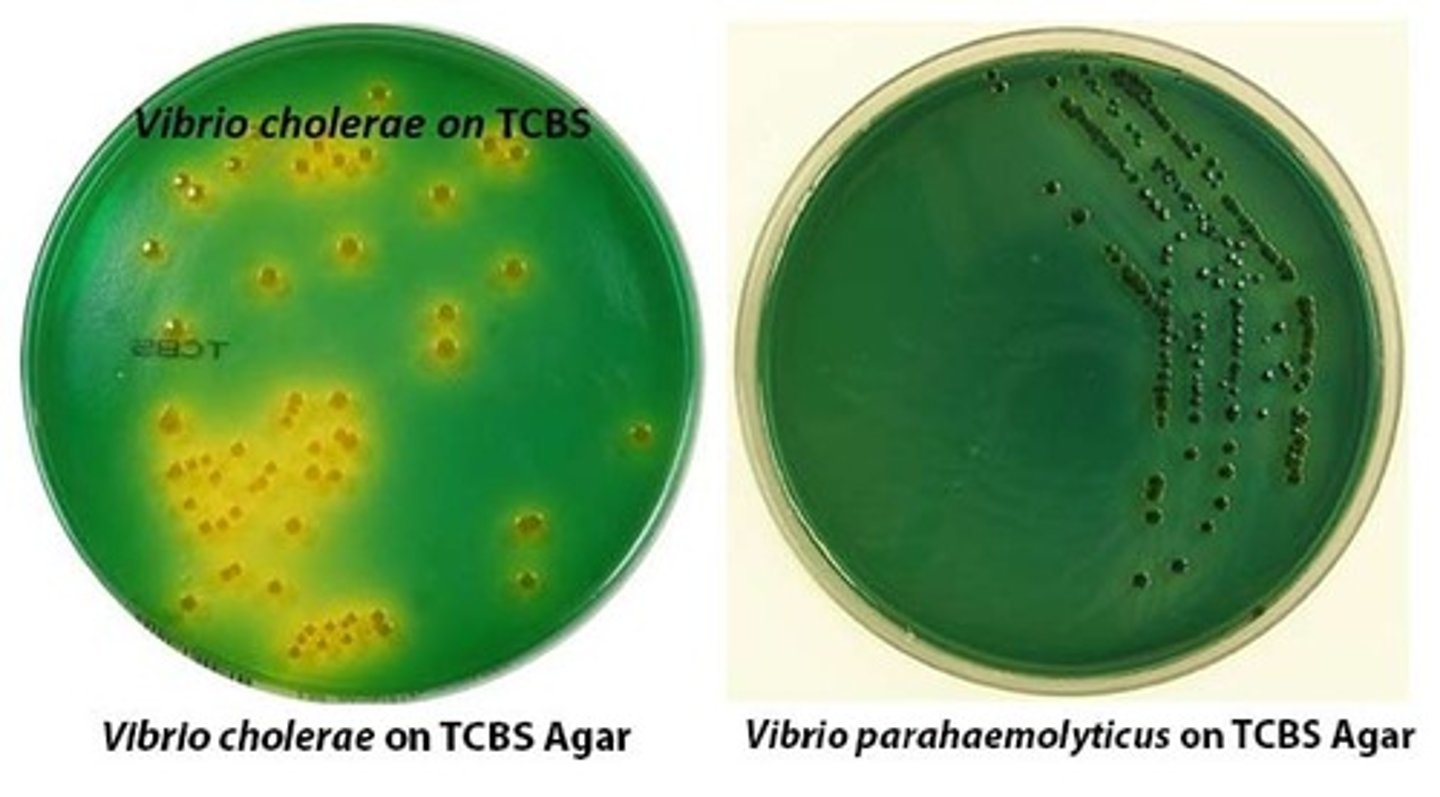
Vibrio vulnificus symptoms
Diarrhea
Abdominal cramps and nausea
vomiting
low-grade fever and chills
-septic shock, skin lesions, bacteremia
Vibrio vulnificus Disease (Swimmer Wound Infections!)
-Responsible for >90% of Vibrio-related deaths in US!
-Two presentations:
Wound infection (primary disease) and secondary skin lesions (result of primary septicemia).
-Vibriolysin key virulence factor for necrosis.
-Highly fatal if not rapid treatment
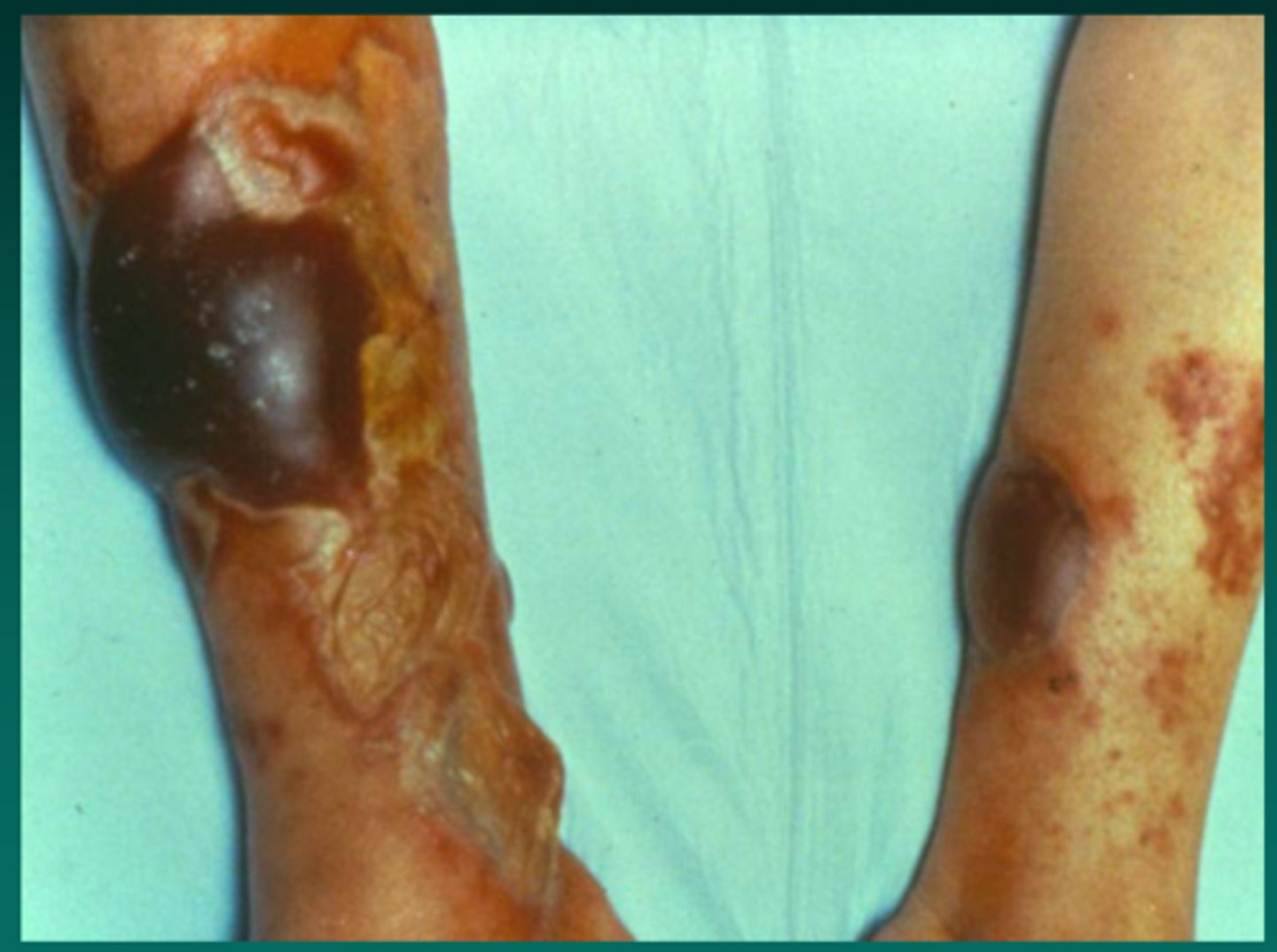
Campylobacter jejuni
-Gram-negative thin-curved rod ("seagull"-shaped), motile (single polar flagellum)
-Leading cause of bloody diarrhea; most reported cause of enteritis and food poisoning in US
Campylobacter jejuni Disease
-Transmission:oonotic; from contaminated food, esp. poultry
-Onset: 2-11 days, duration 3-21 days
-presents: bloody diarrhea with abdominal cramps, vomiting, and fever
-animal reservoirs: dogs, cats, pigs
Helicobacter pylori
-Morphology and structure: Gram negative, Spiral (helical), Motile by polar flagella (corkscrew motility).
-Catalase and oxidase-positive
-urease positive
-oral transmission
-humans reservoir
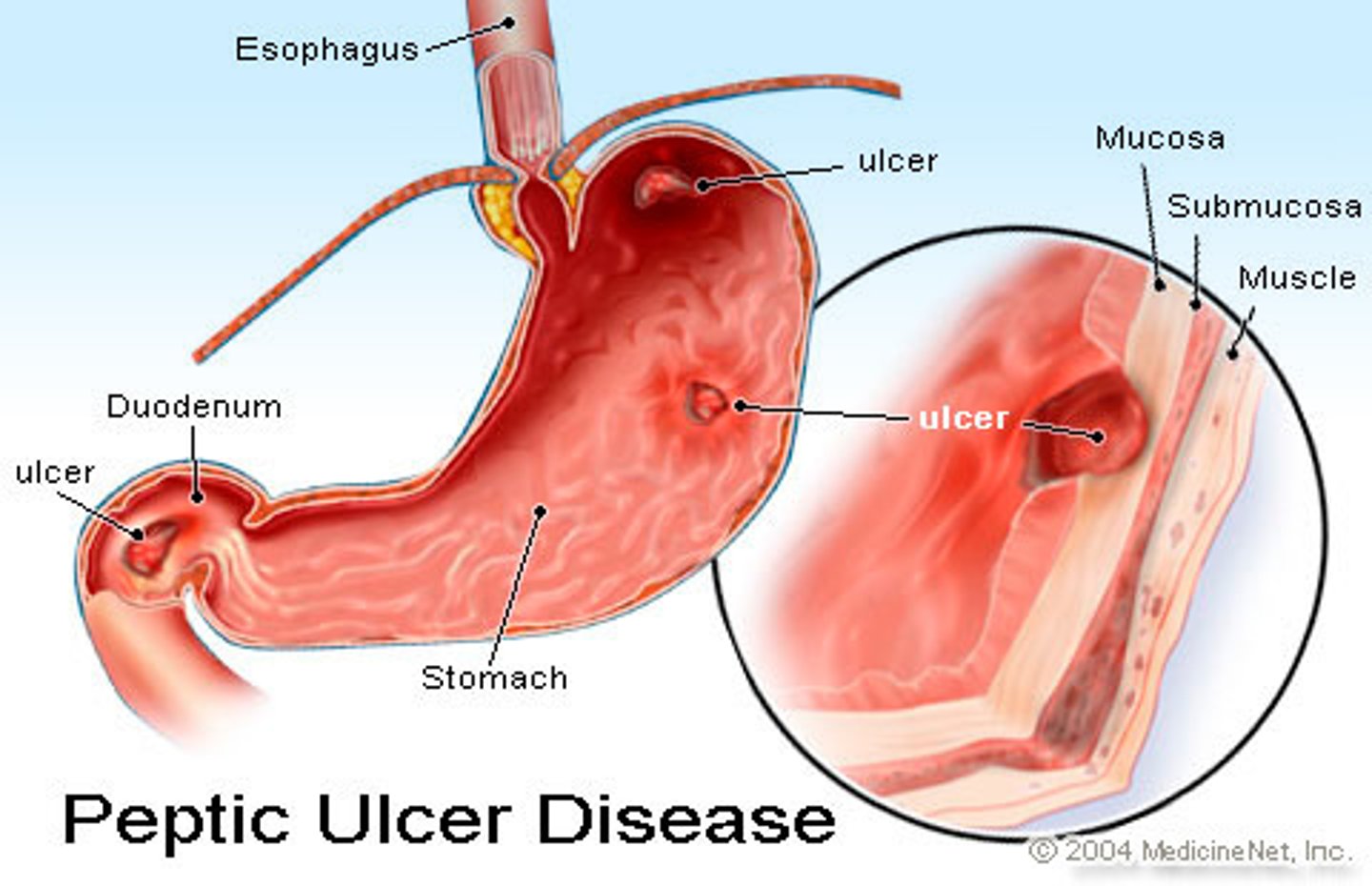
Helicobacter pylori virulence factors
-Mucinase production and motility by flagella (to penetrate the mucus layer)
-Urease + (to protect against gastric acidity)
-Some strains produce cytotoxin
Helicobacter pylori Diseases
-Transmission: ingestion, person-to-person
-Presents: asymptomatic, acute gastritis, stomach and duodenal ulcers, chronic gastritis, gastric adenocarcinoma, gastric malignant lymphoma
-THIS BACTERIA CAUSES CANCER!
-Duration: life-long
Helicobacter pylori disease treatment
triple drug therapy for 2 weeks, most common Amoxicillin + Clarithromycin + Proton pump inhibitor.
types of vibrios
V. cholera, parahemolyticus, vulnificus
characteristic features of vibrios
-gram negative curved rod
-oxidase positive
-motile
transmission of cholera
-requires large inoculum due to sensitivity to stomach acid
characteristic feature of cholera
-rice water diarrhea
-often associated with shellfish poisoning
virulence factors of cholera
AB toxin
-CTA subunit binds and ADP ribosylates stimulatory G protein
-increases cAMP production that triggers water secretion-->watery diarrhea
what causes 95% of sea-food related infections?
vibrio parahemolyticus
Vibrio vulnificus and parahemolyticus on TCBS
green colonies; don't ferment sucrose
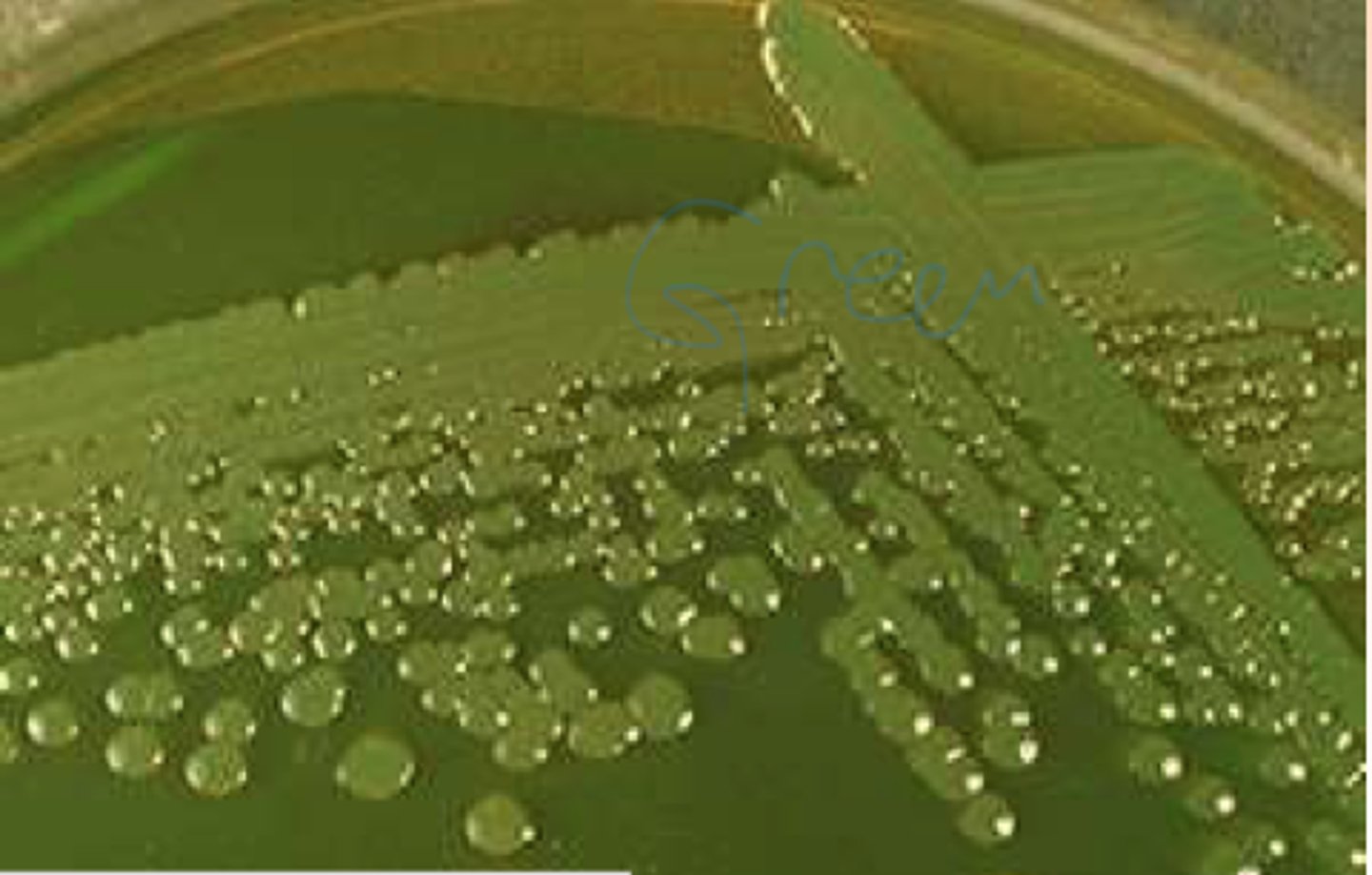
what is the leading cause of death related to seafood consumption in the US?
vibrio vulnificus
Vibrio vulnificus virulence factors
-vibriolysin
vibrio cholera on TCBS
yellow; ferments sucrose, decrease in pH
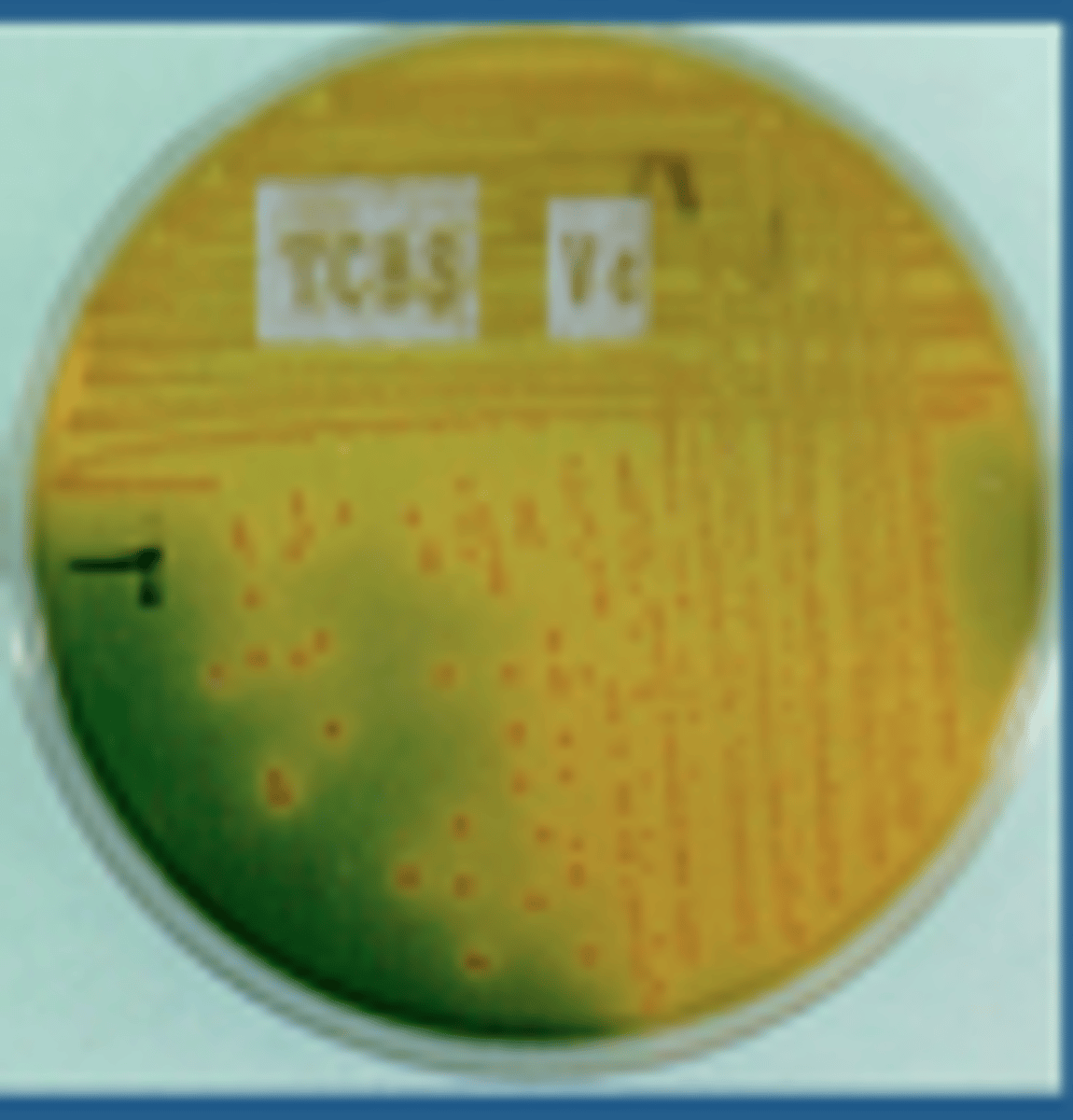
what are the two presentations of vibrio vulnificus?
swimmer wound infections!
-primary septicemia in food borne infection
characteristic features of campylobacter
-thin curved rod, seagull shaped
-grows in hot environments
what is the most reported cause of enteritis and food poisoning in the US?
campylobacter
Transmission of Campylobacter
from contaminated food, esp poultry!
morphology of H. pylori
gram negative, helical, motile (corkscrew motility)
biochemistry of H. pylori
catalase and oxidase positive
-urease positive
diseases of H. pylori
-acute gastritis
-stomach ulcers
-gastric adenocarcinoma, gastric malignant lymphoma; cancer is caused by CAG A, hyperproliferation of gastric B cells